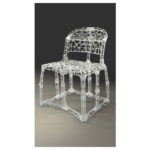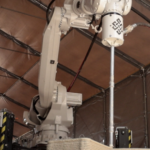The Royal Australian Navy is testing out a new pilot program involving 3D printing for vessel maintenance. In accordance with the program, the presiding Morrison Government is investing AUD $1.5 million for a two-year metal additive manufacturing trial. This will possibly lead to a significant change in production workflows for replacement parts and vessel maintenance tools.
The printers in question come courtesy of Australian metal AM company SPEE3D. Aside from being a home-grown innovation for Australia, the technology is also very fast. Earlier this week at Formnext, SPEE3D won the World’s Fastest 3D Print Record.
In order to further advance the availability of this technology, SPEE3D and Charles Darwin University (CDU) founded the Advanced Manufacturing Alliance (AMA). The program specializes in the progress, research and advancement of advanced manufacturing technologies with strategic focus on the Australian invention of SP3D (supersonic 3D deposition).
This high-tech machinery enables metal components to be produced quickly and efficiently, meaning our ships can get back on the water without delay. Melissa Price, Minister for Defense
Naval 3D Printing
Minister Melissa Price visited Charles Darwin University with Chancellor the Hon Paul Henderson AO this week to inspect the work that was underway for the AUD $1.1 billion defense infrastructure upgrades in the Top End. The Morrison Government is investing AUD $200 billion in the Australian defense industry, and continues to create new jobs and deliver more opportunities for small businesses.
3D printing is proving to have a lot of utility in the defense industries worldwide. In terms of the navy, it is beneficial to have a system with the versatility to produce most replacement parts. It’s especially useful when ships are off-shore or just far from any reserve of necessary components.
Australia has also become a hub for large, high-speed metal printing systems like those of SPEE3D and Titomic. Such systems may prove to be a crucial factor in multiple industries related to defense. A recent report by Global Data suggested that aerospace and military applications are a major factor for the growth of 3D printing. Some programs are still in the testing phase, while others are actually deploying the technology in final production. In a similar fashion, the Australian Navy’s test pilot appears to be a promising endeavor that may lead to further implementation across the board.
Featured image courtesy of Anaid Banuelos Rodriguez.









